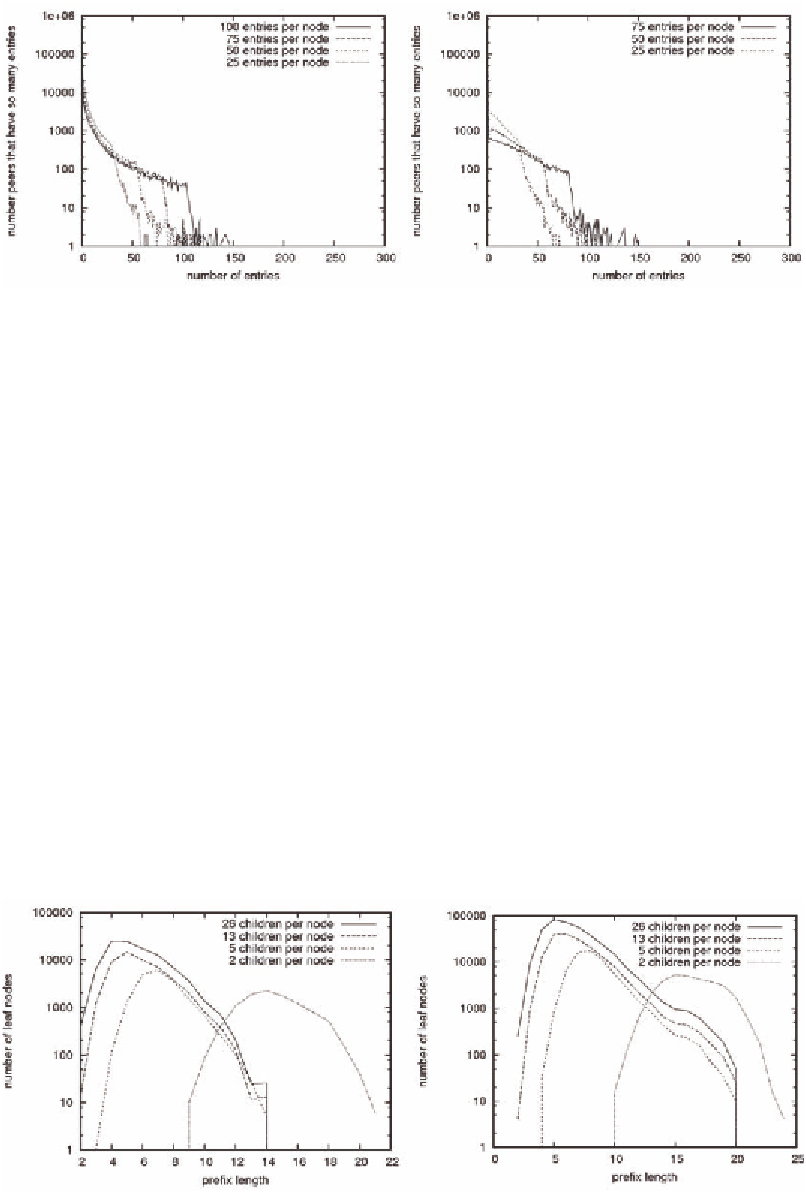Information Technology Reference
In-Depth Information
Figure 8. Entries per Peer, using n=26 (left), and n=5 (right)
load. Figure 8 shows the number of entries per peer
for m in 25, 50, 75, and 100, without replication.
Note that the y-scale showing the number of
peers is logarithmic. Nearly all of the 620,853
peers store less than 3 entries. No peer stores more
than 150 entries. Assuming an average size of an
entry of 128 Bytes, a peer holding 150 entries
would store less then 19 kBytes. This is feasible
even on embedded devices with a built-in peer-
to-peer stack, and it is easily possible to replicate
19 kBytes through current Internet connections.
when searching in an EPHT is 5 in our dataset.
As shown in Figure 9, this is the average prefix
length for n in 5, 13, and 26. Only binary EPHTs
with n=2 result in a significantly larger aver-
age prefix length. If the average prefix length
changes over time, e.g. if the number of users or
the distribution of names is other than expected,
then the initial prefix length needs to be adapted
in the search operation.
Network Traffic
Prefix Length
The network traffic is evaluated in terms of the
number of lookup operations in the DHT that is
needed to process a range query
2
. As an example,
we queried the prefixes SCHN* which results in
In the description of the algorithm above, we
said that the initial prefix length to start with
Figure 9. Prefix Length for m=25 (left), and m=100 (right)

Search WWH ::

Custom Search